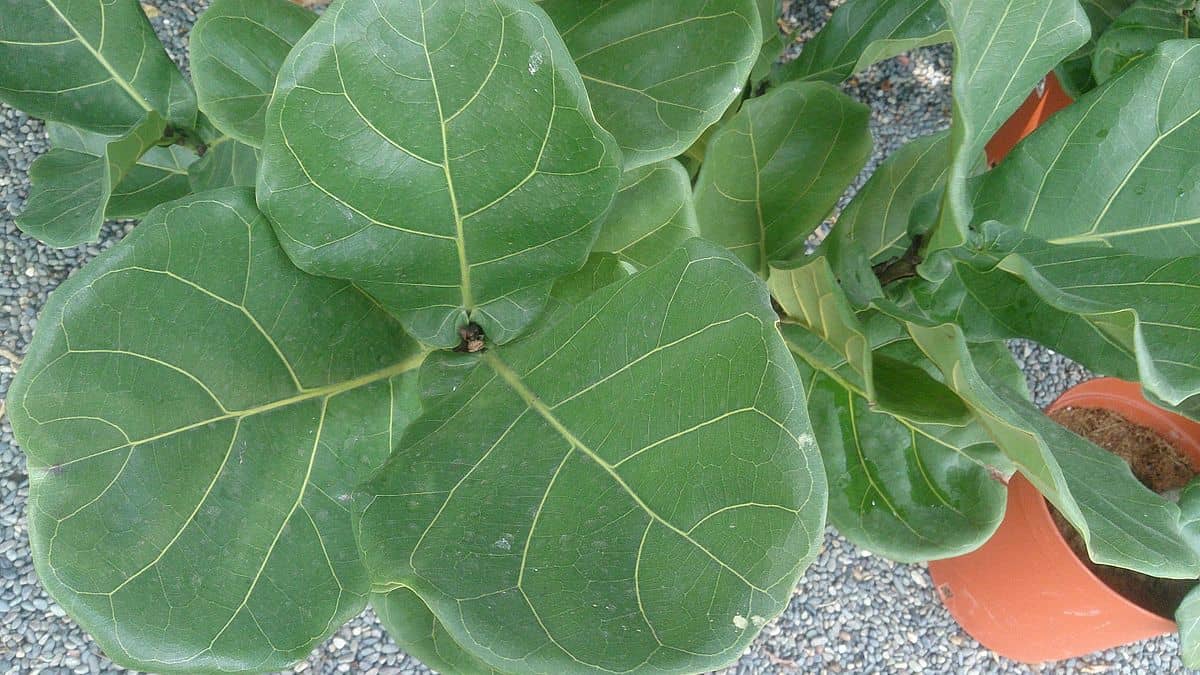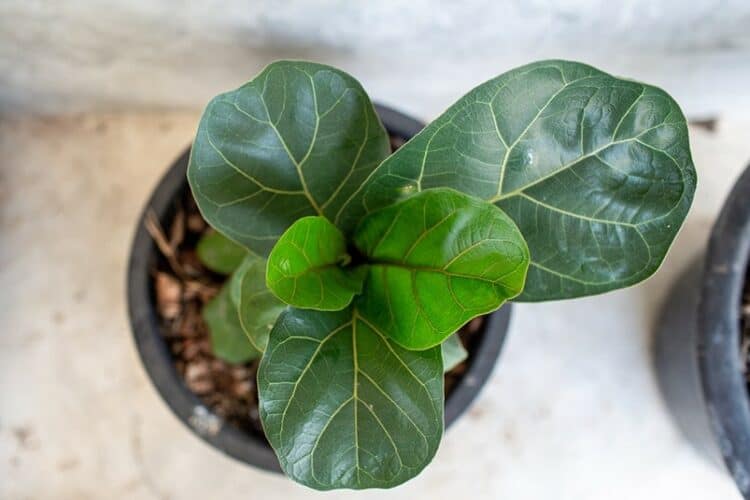Fiddle leaf figs, specifically their sap, are poisonous to dogs. Their sap contains calcium oxalate crystals, which are basically microscopic needles that will scratch your dog’s mouth, tongue, and throat on contact. Because of how unpleasant nibbling on a fiddle leaf fig can be, many dogs spit it out and avoid them altogether. If you’re 100% sure your dog did not swallow any part of the plant, try to wash out their mouth with water, keep them calm, and observe them for any adverse reactions.
What to Do If Your Dog Eats a Fiddle Leaf Fig
If your dog does eat any part of a fiddle leaf fig—or you suspect they did—we recommend calling your vet ASAP. Ingesting the sharp and insoluble oxalate crystals can cause issues such as:
- Swelling and inflammation of the face, mouth, tongue, and lips
- Foaming at the mouth
- Difficulty breathing
- Severe vomiting
- Lethargy
- Diarrhea
- Intense agitation and pain
- Gastrointestinal issues
The good news is that unless your dog ate an obscene amount of fiddle leaf fig, it’s rarely fatal and most likely won’t cause permanent damage.
Still, the quicker those tiny needles are out of your dog’s system, the better. Your vet will be able to assess the situation and give your pup the proper care, which may include medication for the irritation, inducing vomiting (if it’s within 2 hours of ingestion), giving them IV fluids, and monitoring their heart rate and breathing.
First Aid for Dogs Who Ate Fiddle Leaf Figs
- Thoroughly remove any remaining sap from their fur and skin. Use a mild soap and cool water.
- Keep them calm. Just one bite of fiddle leaf fig can cause a lot of pain and irritation, so your dog may be feeling agitated. They may be pawing at their face or trying to rub it on something else, which will only make the situation worse.
- Give them water to drink if they’re able. Small sips are best at first and then allow them to drink as much as they want.
- Don’t force them to throw up. This could cause more irritation and pain, and there’s a risk of aspiration (when vomit goes into the lungs).
- Call your vet. Tell them as many details as possible, including how long ago your dog ate the fiddle leaf fig, what part they ate and how much, any symptoms, and whether or not you were able to remove all the sap from their fur and skin.

Houseplant Safety Tips for Dog Owners
1. Do Your Research
Before you bring any new plant into your home, make sure to do your research on its toxicity levels. The ASPCA has a great searchable database that can help you determine which plants are safe and which ones aren’t.
Here’s a quick list of plants that are poisonous to dogs, just to get you started:
- Alocasia
- Aloe Vera
- Azalea
- Bird of Paradise
- Chrysanthemum
- Cyclamen
- Dieffenbachia
- Dracaena
- Kalanchoe
- Philodendron
- Poinsettia
- Pothos
- Sago Palm
- Schefflera
- Yew
- ZZ Plant
2. Keep Poisonous Plants Out of Reach
Can’t bear to part with your fiddle leaf fig? We get it—they’re gorgeous plants. In this case, puppy-proofing is key. Keep poisonous plants out of reach by putting them on high shelves or in rooms that your dog doesn’t have access to.
3. Consider Getting Fake Plants
If you’re worried about your dog getting into your plants, you can always opt for fake ones. There are some incredibly convincing faux plants out there these days, and they come in a wide range of styles to suit any home. Not to mention, they’re way easier to take care of than the real thing and are safer for your pup, too.
4. Train Your Dog to Leave Plants Alone
You can’t keep your eye on your dog 24/7. Teaching them the right thing to do, such as staying away from all houseplants, creates an extra layer of protection in case they get into something when you’re not looking.
Conclusion
Your dog relies on you to create a safe and comfortable environment for them, which includes keeping toxic plants away from their space. However, accidents can and do happen, so try to learn as much as possible about plant safety and be prepared in case your dog does get into something they shouldn’t have.
Featured Image Credit: Jantanee Boonkhaw, Shutterstock
















